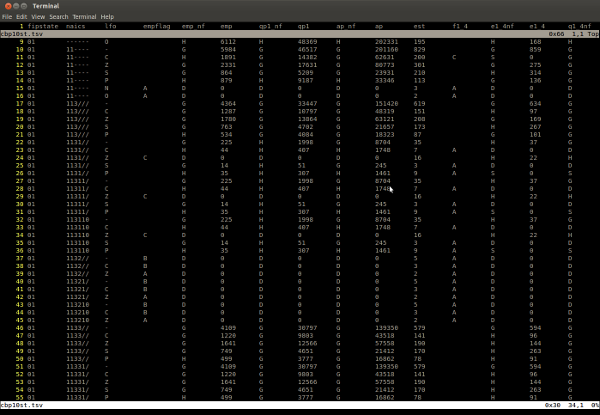132 private links
CleverCSV provides a drop-in replacement for the Python csv package with improved dialect detection for messy CSV files. It also provides a handy command line tool that can standardize a messy file or generate Python code to import it.
How to combine data spread over two CSV files, like separate tables in a normalized relational database.
Converts csv files into LaTeX tables. Contribute to O2-AC/csv2tex development by creating an account on GitHub.
A Data Package consists of:
- Metadata that describes the structure and contents of the package
- Resources such as data files that form the contents of the package
- The Data Package metadata is stored in a "descriptor". This descriptor is what makes a collection of data a Data Package. The structure of this descriptor is the main content of the specification below.
In addition to this descriptor a data package will include other resources such as data files. The Data Package specification does NOT impose any requirements on their form or structure and can therefore be used for packaging any kind of data.
The data included in the package may be provided as:
- Files bundled locally with the package descriptor
- Remote resources, referenced by URL
- "Inline" data (see below) which is included directly in the descriptor
This is a set of command line utilities for manipulating large tabular data files. Files of numeric and text data commonly found in machine learning, data mining, and similar environments. Filtering, sampling, statistics, joins, and more.
These tools are especially useful when working with large data sets. They run faster than other tools providing similar functionality, often by significant margins. See Performance Studies for comparisons with other tools.
They perform data manipulation and statistical calculations on tab delimited data. They are intended for large files. Larger than ideal for loading entirely in memory in an application like R, but not so big as to necessitate moving to Hadoop or similar distributed compute environments. The features supported are useful both for standalone analysis and for preparing data for use in R, Pandas, and similar toolkits.
From eBay.
Executes SQL-like queries on CSVs/TSVs tabular data files; each tabular file is treated as a database table; support to all SQL constructs (WHERE, GROUP BY, JOIN).
The author tried to edit data in spreadsheet programs.
This post illustrate ho to use Vim to edit tabular data, although there are a few things that will make it more pleasant. It is assumed that editing files are in tab-separated value format (TSV).
"But what about CSV files?" Just. Don't.
Do: convert your CSV to TSV and back for editing.

This is version 1 of a cookbook that will help you check whether a data table (defined on the data tables page) is properly structured and free from formatting errors, inconsistencies, duplicates and other data headaches.
xsv is a command line program for indexing, slicing, analyzing, splitting and joining CSV files. Commands should be simple, fast and composable:
- Simple tasks should be easy.
- Performance trade offs should be exposed in the CLI interface.
- Composition should not come at the expense of performance.
